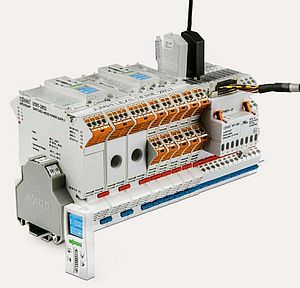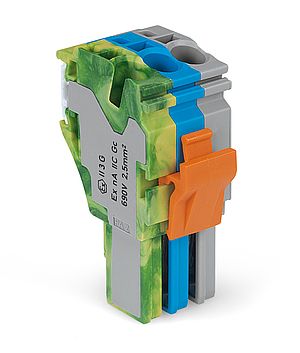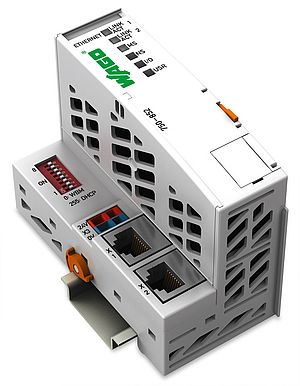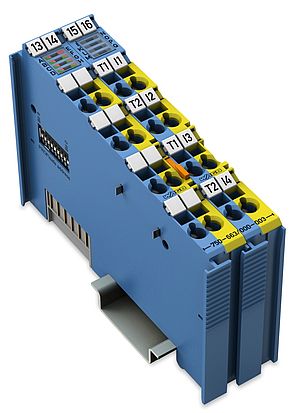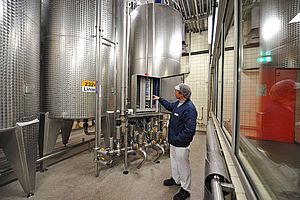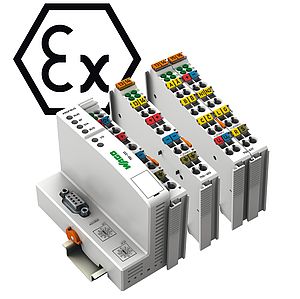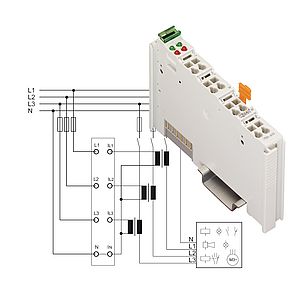A former railway ferry is being converted for offshore service and equipped with a complete control and alarm system. The large-scale project shows how pumping the oil from the seabed is facilitated by means of control and alarm equipment.
″I became involved through a network in which the company buys and rebuilds NTD offshore vessels and then resells these to operators in the offshore industry“, said Lars Halkjær of Haltek ApS from West Jutland, Denmark. A Croatian shipyard rebuilt a former rail ferry to an offshore vessel. The ferry was widened by 11 feet, the deck house became three floors higher, and the quarterdeck was cut open and exposed. The 3,000 square meter quarterdeck includes the oil processing. ″During a violent storm a few years ago, the fixed production platforms were hit so hard that some of them are now replaced by special ships“, says Lars Halkjær.
4,000 I/O signals
The greatest challenge for Lars Halkjær was the size of the project - the largest in the short lifetime of the company. The company Haltek was founded in 2006 and is a system integrator for the WAGO-I/O-SYSTEM 750. The shipyard project includes the alarm and control system with about 4000 I/O signals, 12 PCs and 18 PLCs. The system monitors and controls also the water level in the bottom tanks and the oil pressure of the engines.
41 remote control panels
The propeller, generator, ballast and tank gauge is also monitored. If something unfavorable happens to the vessel, the alarm in the SCADA system records and displays it on the screen on the bridge, in the control room and to the on duty officer. The comprehensive system is connected to the ETHERNET network and installed on strategic locations on the ship with a total of 41 remote control panels.
Modules with PROFIBUS
An interesting detail are the 7 azimuth propellers that hold the ship‘s position within a few meters in heavy seas. The propellers are controlled by a DP system (Dynamic Positioning), which was developed a British company. Lars Halkjær stated that the data on and from the propellers are registered in the alarm and control system. Since there is a link to the generators at the same time, action can be taken if the diesel generators are overloaded. This can happen even though the total installed electric power is 13.2MW. All control cabinets are equipped with I/O modules of the WAGO 750 Series with PROFIBUS interface. ″We have opted for WAGO, because we had good experiences with the durability and flexibility. In addition, the modules of the 750 Series have a number of maritime approvals, as now required by Lloyds,“ said Lars Halkjær.
40 modules on a DIN rail
Lars Halkjær values the many variations of the WAGO modules – that was one of several reasons why he decided on this technique, as in previous projects: ″If we, for example, mount 40 I/O modules on a DIN-rail, it works as a complete terminal block. This saves time and reduces the risk for errors. This is important because the cables and control cabinets are mounted in the shipyard in Croatia – so misunderstandings can easily arise.“ Lars Halkjær is convinced that the next project will also include WAGO modules. One of the advantages of WAGOs modular I/O system is the fact that it is easy to add new components later and possibly implement a PLC functionality directly in the node. The WAGO system offered the particular vessel registrations, a compact design and allows for quick, error-free installation
Complete control and alarm system
for offshore application
- by WAGO Kontakttechnik GmbH & Co. KG
- October 4, 2010
- 11743 views





